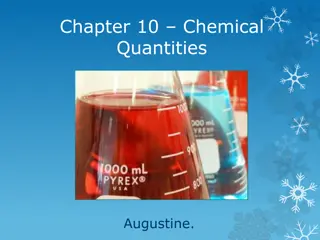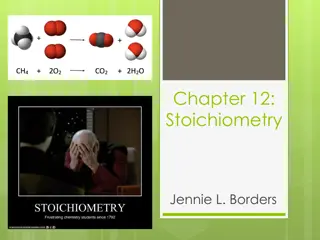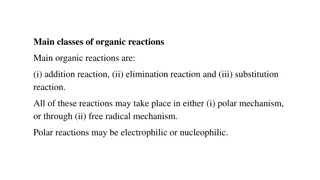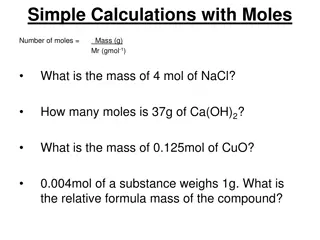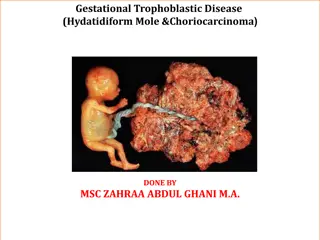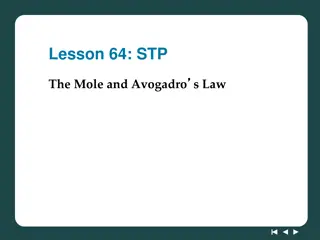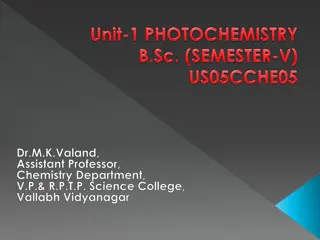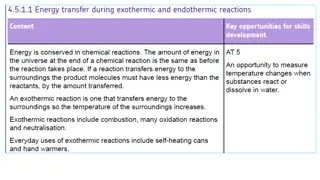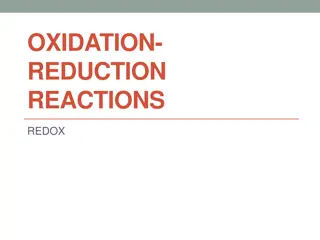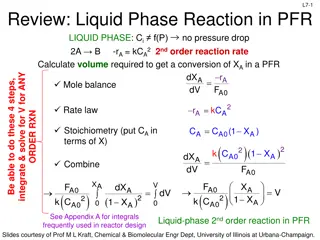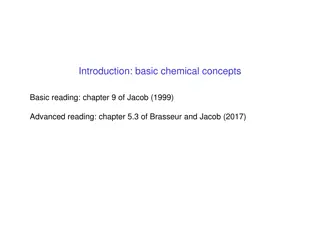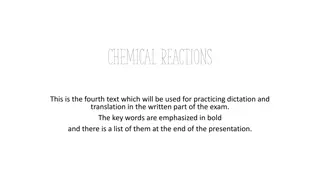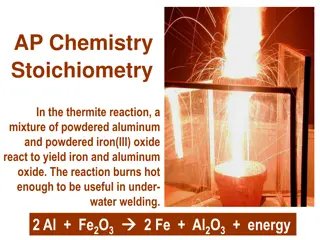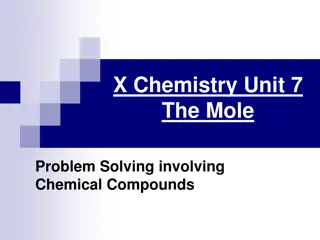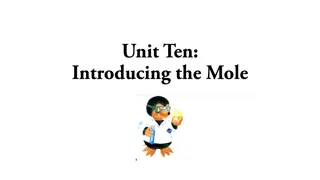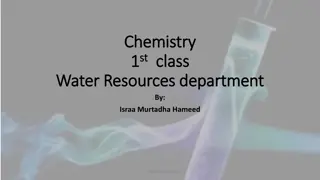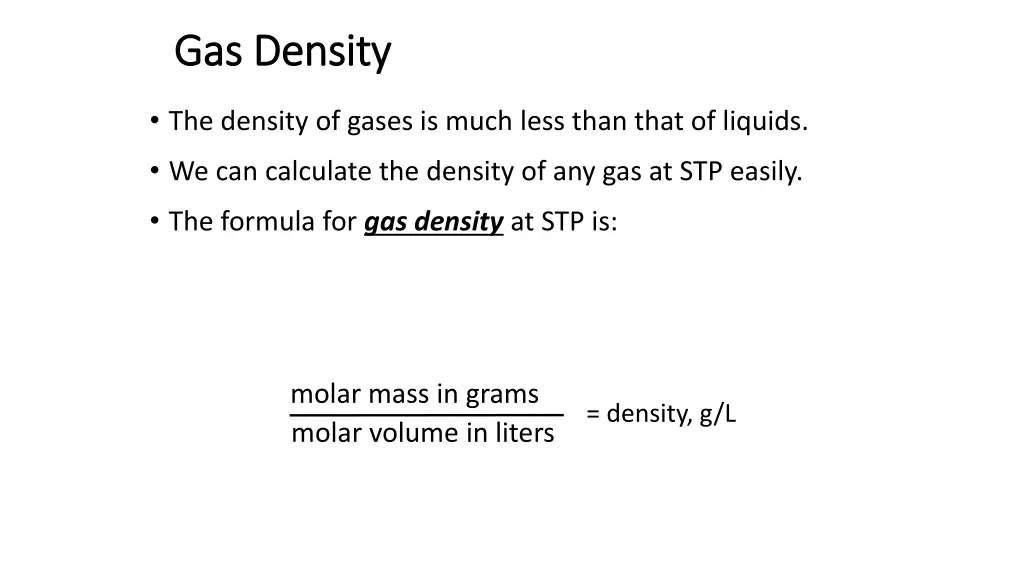
Gas Density Calculations and Molar Mass Formulas
Learn how to calculate gas density at STP, determine molar mass of gases using molar volume, convert between moles, particles, mass, and volume, and apply the law of definite composition in chemistry. Explore examples with ammonia, methane, ozone, and hydrogen gases.
Download Presentation

Please find below an Image/Link to download the presentation.
The content on the website is provided AS IS for your information and personal use only. It may not be sold, licensed, or shared on other websites without obtaining consent from the author. If you encounter any issues during the download, it is possible that the publisher has removed the file from their server.
You are allowed to download the files provided on this website for personal or commercial use, subject to the condition that they are used lawfully. All files are the property of their respective owners.
The content on the website is provided AS IS for your information and personal use only. It may not be sold, licensed, or shared on other websites without obtaining consent from the author.
E N D
Presentation Transcript
Gas Density Gas Density The density of gases is much less than that of liquids. We can calculate the density of any gas at STP easily. The formula for gas density at STP is: molar mass in grams molar volume in liters = density, g/L
Calculating Gas Density What is the density of ammonia gas, NH3, at STP? N= 14.01 g; H = 1.01 g. First we need the molar mass for ammonia; 14.01 + 3(1.01) = 17.04 g/mol The molar volume NH3 at STP is 22.4 L/mol. Density is mass/volume: 17.04 g/mol = 0.761 g/L 22.4 L/mol
Molar Mass of a Gas We can also use molar volume to calculate the molar mass of an unknown gas. 1.96 g of an unknown gas occupies 1.00L at STP. What is the molar mass? We want g/mol, we have g/L. 1.96 g 1.00 L 22.4 L 1 mole = 43.9 g/mol
Mole Unit Factors We now have three interpretations for the mole: 1 mol = 6.02 1023 particles 1 mol = molar mass 1 mol = 22.4 L at STP for a gas This gives us 3 unit factors to use to convert between moles, particles, mass, and volume.
Mole-Volume Calculation A sample of methane, CH4, occupies 4.50 L at STP. How many moles of methane are present? We want moles, we have volume. Use molar volume of a gas: 1 mol = 22.4 L 1 mol CH4 22.4 L CH4 4.50 L CH4 = 0.201 mol CH4
Mass-Volume Calculation What is the mass of 3.36 L of ozone gas, O3, at STP? We want mass O3, we have 3.36 L O3. Convert volume to moles then moles to mass: 1 mol O3 48.00 g O3 1 mol O3 3.36 L O3 22.4 L O3 = 7.20 g O3
Molecule-Volume Calculation How many molecules of hydrogen gas, H2, occupy 0.500 L at STP? We want molecules H2, we have 0.500 L H2. Convert volume to moles and then moles to molecules: 6.02 1023 molecules H2 1 mole H2 1 mol H2 22.4 L H2 0.500 L H2 = 1.34 1022 molecules H2
Law of Definite Composition The law of definite compositionstates that compounds always contain the same elements in a constant proportion by mass . Sodium chloride (NaCl) is always 39.3% sodium and 60.7% chlorine by mass, no matter what its source. Water (H2O) is always 11.2% hydrogen and 88.8% oxygen by mass.
Law of Definite Composition A drop of water, a glass of water, and a lake of water all contain hydrogen and oxygen in the same percent by mass.
Chemical Formulas A particle composed of two or more nonmetal atoms is a molecule. A chemical formula expresses the number and types of atoms in a molecule. The chemical formula of sulfuric acid is H2SO4.
Writing Chemical Formulas The number of each type of atom in a molecule is indicated with a subscript in a chemical formula. If there is only one atom of a certain type, no 1 us used. A molecule of the vitamin niacin has 6 carbon atoms, 6 hydrogen atoms, 2 nitrogen atoms, and 1 oxygen atom. What is the chemical formula? C6H6N2O
Interpreting Chemical Formulas Some chemical formulas use parenthesis to clarify atomic composition. Antifreeze (ethylene glycol) has the chemical formula C2H4(OH)2. There are 2 carbon atoms, 4 hydrogen atoms, and 2 OH units, giving a total of 6 hydrogen atoms and 2 oxygen atoms. Total of 10 atoms.
Percent Composition The percent compositionof a compound lists the mass percent of each element. For example, the percent composition of water, H2O is: 11% hydrogen and 89% oxygen All water contains 11% hydrogen and 89% oxygen by mass.
Calculating Percent Composition There are a few steps to calculating the percent composition of a compound. Lets practice using H2O. Assume you have 1 mole of the compound. One mole of H2O contains 2 mol of hydrogen and 1 mol of oxygen. 2(1.01 g H) + 1(16.00 g O) = molar mass H2O 2.02 g H + 16.00 g O = 18.02 g H2O
Calculating Percent Composition Next, find the percent composition of water by comparing the masses of hydrogen and oxygen in water to the molar mass of water: 2.02 g H 18.02 g H2O 100% = 11.2% H 16.00 g O 18.02 g H2O 100% = 88.79% O
Percent Composition Problem TNT (trinitrotoluene) is a white crystalline substance that explodes at 240 C. Calculate the percent composition of TNT, C7H5(NO2)3. 7(12.01 g C) + 5(1.01 g H) + 3 (14.01 g N + 32.00 g O) = Total g C7H5(NO2)3 84.07 g C + 5.05 g H + 42.03 g N + 96.00 g O = 227.15 g C7H5(NO2)3.
Percent Composition of TNT 84.07 g C 227.15 g TNT 100% = 37.01% C 5.05 g H 227.15 g TNT 100% = 2.22% H 42.03 g N 227.15 g TNT 100% = 18.50% N 96.00 g O 227.15 g TNT 100% = 42.26% O
Empirical Formulas The empirical formulaof a compound is the simplest whole number ratio of ions in a formula unit or atoms of each element in a molecule. The molecular formula of benzene is C6H6 The empirical formula of benzene is CH. The molecular formula of octane is C8H18 The empirical formula of octane is C4H9.


